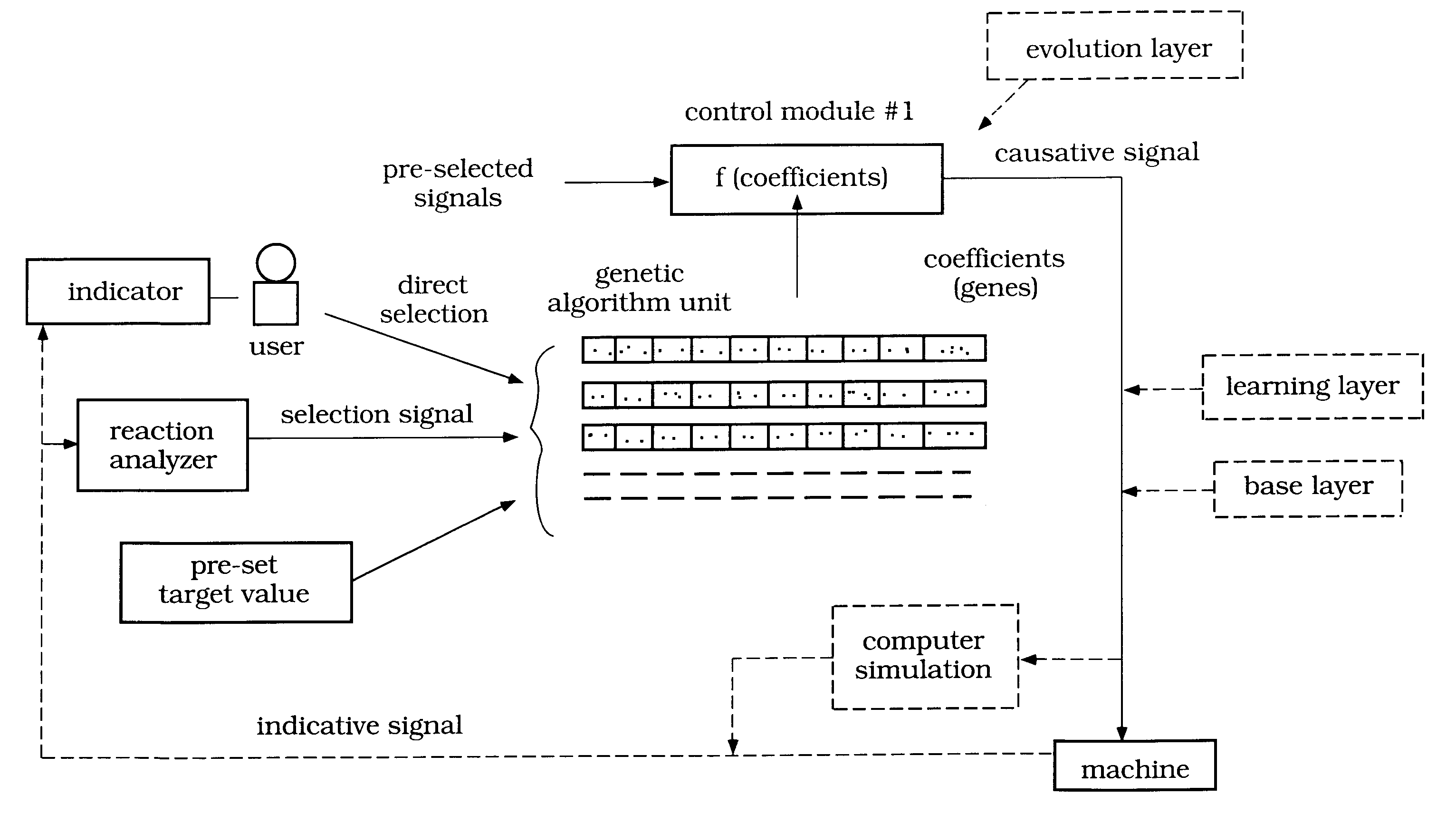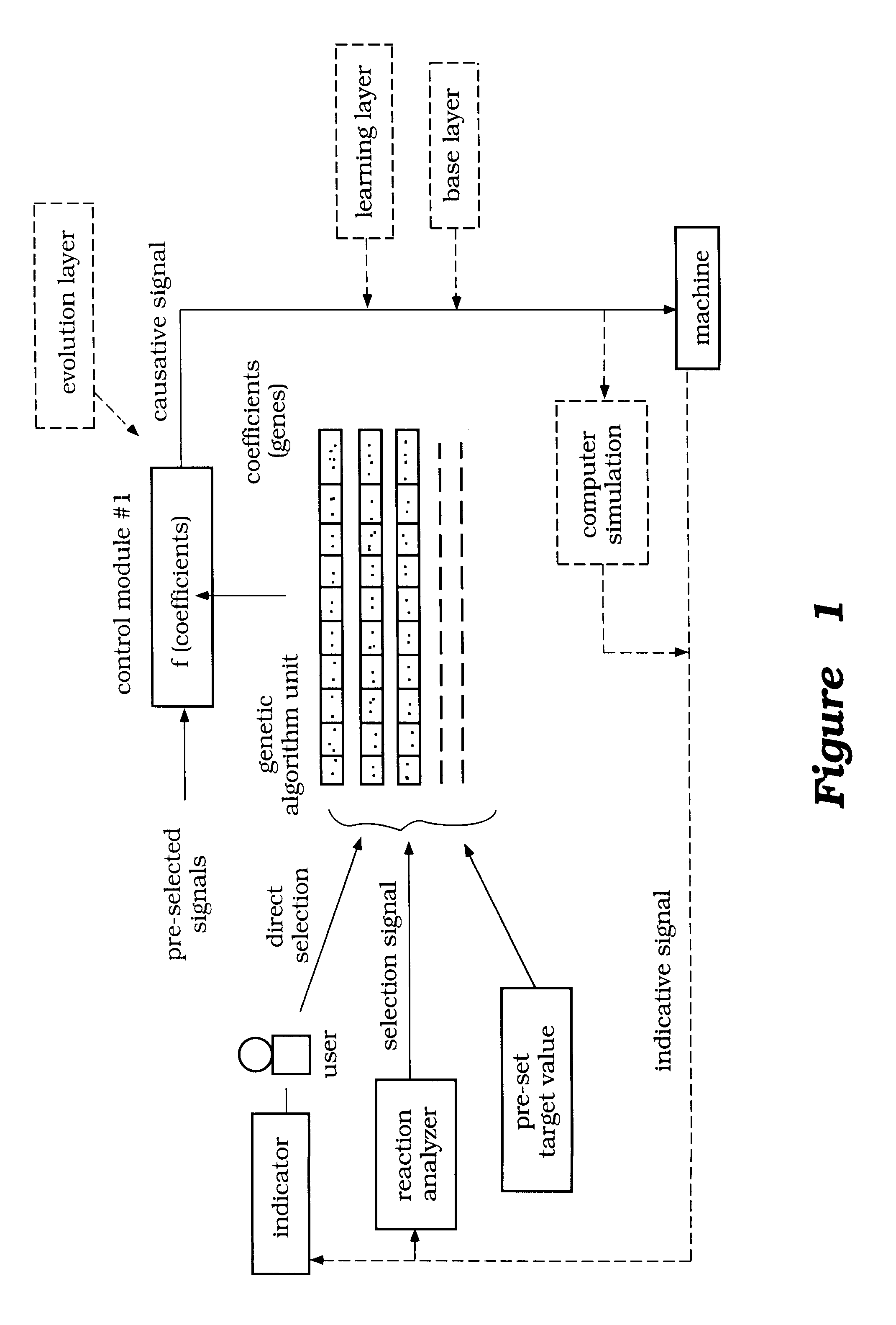Evolutionary controlling system
a control system and evolution technology, applied in the direction of electric control, genetic algorithms, instruments, etc., can solve the problems of troublesome user checking the characteristics of the product, user may not like other operational characteristics, and cannot satisfy all of the users of the produ
- Summary
- Abstract
- Description
- Claims
- Application Information
AI Technical Summary
Problems solved by technology
Method used
Image
Examples
first embodiment
In a first embodiment, the subject to be controlled is an engine installed in vehicles or vessels. However, in the evolutionary control system of the present invention, no restriction is imposed on the type of machine to be controlled, and as with the engine, a robot used in machine tools, a motor used in electrically-driven vehicles, or the like can be controlled by adopting the evolutionary control system based on the same principle as in the engine.
FIG. 4 is a schematic view showing the relationship between an engine 1 and a control device 10 performing the above-described evolutionary control system.
As shown in FIG. 4, the control device 10 controls the engine in such a way that fuel efficiency and acceleration performance are compatible with each other, by controlling the injection time period of an injector 3, the ignition timing of a ignition plug 5, and the valving timing of an intake valve 7, based on information input into the control device, such as the engine speed (r.p....
second embodiment
the evolutionary control system of the present invention will be explained with reference to FIGS. 15-20.
The difference between the previous first embodiment and the second embodiment resides in the manner of selection of control modules for evolution in the evolution-fitness layer for the evaluation system. In the first embodiment, selection is conducted based on the user's direct command or indication whereas, in the second embodiment, selection is conducted autonomously, based on a presumption of the user's intention. As with the first embodiment, the second embodiment will be explained in connection to an engine installed in vehicles or vessels. However, in the evolutionary control system of the present invention, no restriction is imposed on the type of machine to be controlled, and as with the engine, a robot used in machine tools, a motor used in electrically-driven vehicles, or the like can be controlled by adopting the evolutionary control system based on the same principle...
PUM
 Login to View More
Login to View More Abstract
Description
Claims
Application Information
 Login to View More
Login to View More - R&D
- Intellectual Property
- Life Sciences
- Materials
- Tech Scout
- Unparalleled Data Quality
- Higher Quality Content
- 60% Fewer Hallucinations
Browse by: Latest US Patents, China's latest patents, Technical Efficacy Thesaurus, Application Domain, Technology Topic, Popular Technical Reports.
© 2025 PatSnap. All rights reserved.Legal|Privacy policy|Modern Slavery Act Transparency Statement|Sitemap|About US| Contact US: help@patsnap.com



